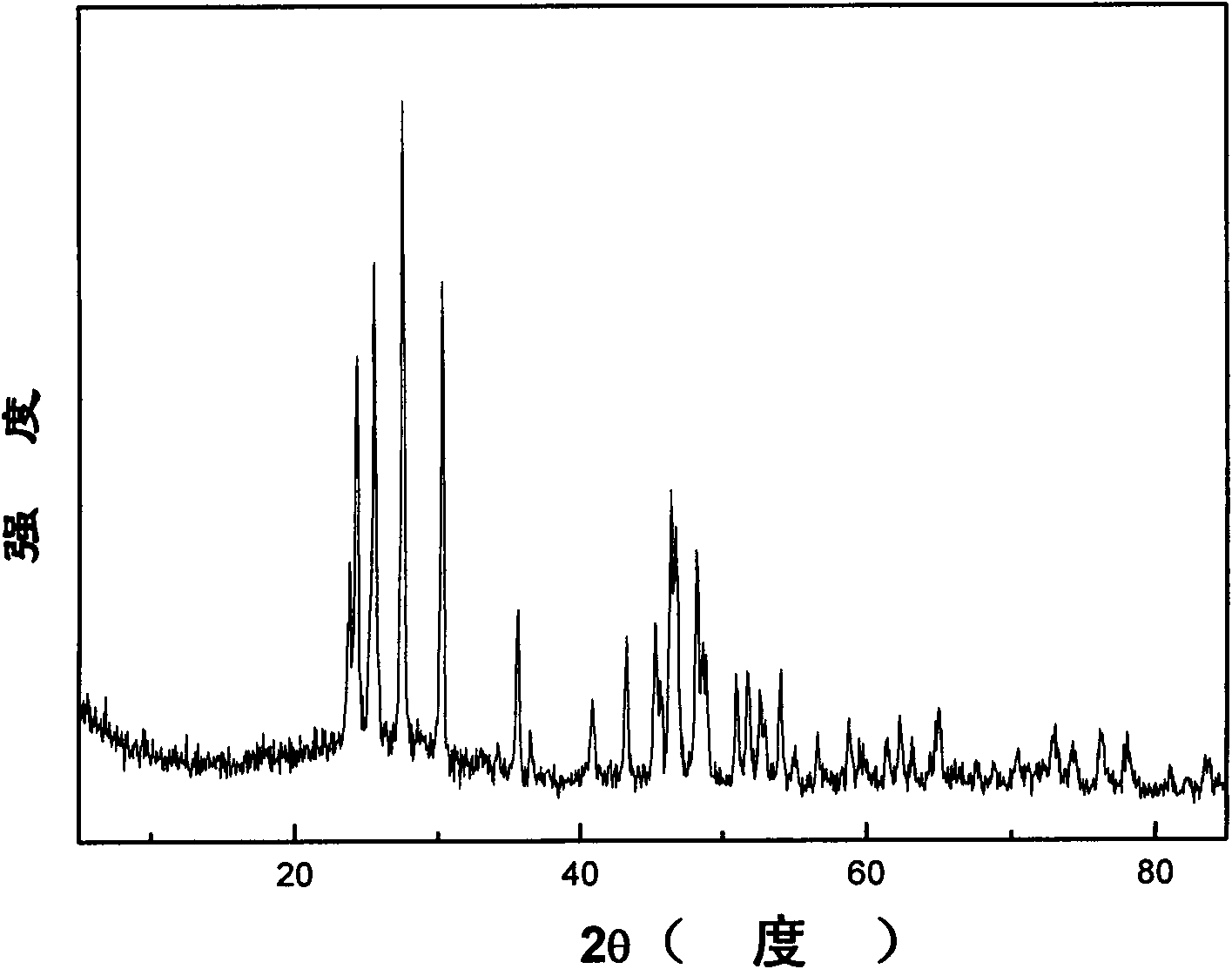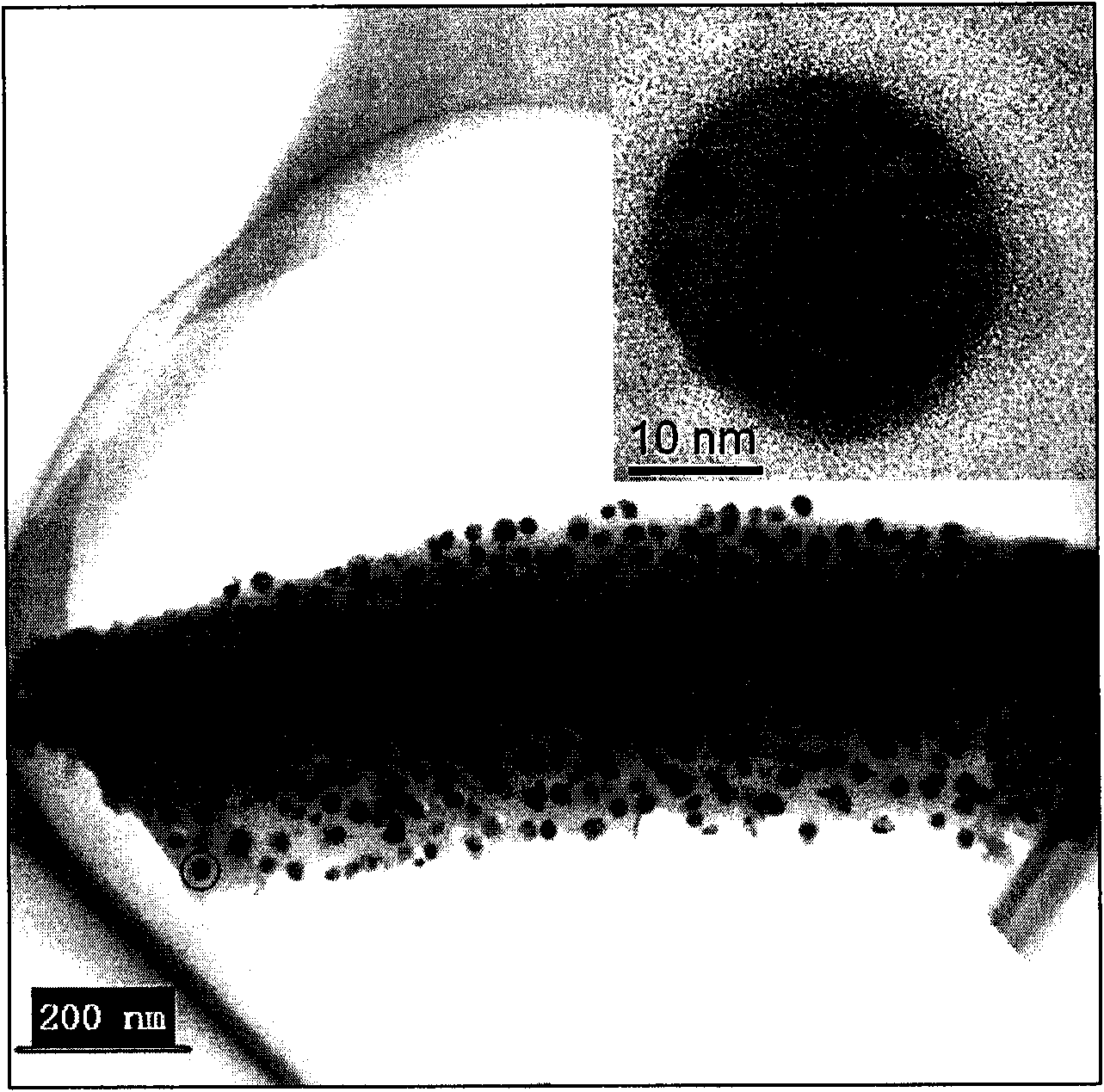Transparent glass ceramics with quantum cutting luminescence characteristics and preparation method thereof
A technology of luminescent properties, glass ceramics, applied in photovoltaic power generation, electrical components, circuits, etc., can solve the problems of limited practical application, poor transparency, serious scattering, etc., achieve good mechanical properties and thermal stability, low cost, and preparation technology simple effect
- Summary
- Abstract
- Description
- Claims
- Application Information
AI Technical Summary
Problems solved by technology
Method used
Image
Examples
example 1
[0018] Example 1: Analytical pure SiO 2 、Al 2 o 3 , NaF, YF 3 and a purity of 99.99% YbF 3 Powder, according to 0.5YbF 3 : 52SiO 2 : 25Al 2 o 3 : 12.5NaF : 10TbF 3 (Molar ratio) is accurately weighed and placed in an agate mortar, ground for more than half an hour to make it evenly mixed, then placed in a platinum crucible, heated to 1500°C in a program-controlled high-temperature box-type resistance furnace, and then kept for 6 hours , and then, pour the melt into a copper mold and quickly cool it to form a precursor glass; put the precursor glass into a resistance furnace, anneal at 600°C for 2 hours and then cool with the furnace to eliminate internal stress. According to the results of differential thermal analysis, the annealed glass was kept at 650°C for 5 hours to obtain colorless and transparent glass ceramics; the results of X-ray diffraction showed that TbF with orthorhombic structure was precipitated in the glass matrix. 3 crystal phase (eg figure 1 shown)...
example 2
[0020] Example 2: Analytical pure SiO 2 、Al 2 o 3 , NaF, YF 3 and YbF with a purity of 99.99% 3 and TbF 3 Powder, according to 1.0YbF 3 : 52SiO 2 : 25Al 2 o 3 :12NaF:10TbF 3 The proportioning of (molar ratio) is accurately weighed, and after the same preparation and heat treatment process as Example 1, a colorless and transparent glass-ceramic is obtained. The results of X-ray diffraction, transmission electron microscopy and energy spectrum analysis showed that TbF precipitated in glass ceramics 3 nanocrystalline phase, and the rare earth ion Yb gathers in the crystal phase. After the sample is surface polished, the emission spectrum at room temperature is measured with a FLS920 fluorescence spectrometer under the excitation condition of 485nm, and it is observed that the corresponding Yb 3+ : 2 f 5 / 2 → 2 f 7 / 2 Transitional near-infrared quantum tailoring emission band (central wavelength 976nm). By calculating the fluorescence decay curve of the sample, the t...
example 3
[0021] Example 3: Analytical pure SiO 2 、Al 2 o 3 , NaF, YF 3 and YbF with a purity of 99.99% 3 and TmF 3 Powder, according to 1.5YbF 3 : 52SiO 2 : 25Al 2 o 3 : 11.5NaF : 10TbF 3 The proportioning of (molar ratio) is accurately weighed, and after the same preparation and heat treatment process as Example 1, a colorless and transparent glass-ceramic is obtained. The results of X-ray diffraction, transmission electron microscopy and energy spectrum analysis showed that TbF precipitated in glass ceramics 3 In the nanocrystalline phase, rare earth ions Yb gather in the crystalline phase. After the sample is surface polished, the emission spectrum at room temperature is measured with a FLS920 fluorescence spectrometer under the excitation condition of 485nm, and it is observed that the corresponding Yb 3+ : 2 f 5 / 2 → 2 f 7 / 2 Transitional near-infrared quantum tailoring emission band (central wavelength 976nm). By calculating the fluorescence decay curve of the sampl...
PUM
 Login to View More
Login to View More Abstract
Description
Claims
Application Information
 Login to View More
Login to View More - R&D
- Intellectual Property
- Life Sciences
- Materials
- Tech Scout
- Unparalleled Data Quality
- Higher Quality Content
- 60% Fewer Hallucinations
Browse by: Latest US Patents, China's latest patents, Technical Efficacy Thesaurus, Application Domain, Technology Topic, Popular Technical Reports.
© 2025 PatSnap. All rights reserved.Legal|Privacy policy|Modern Slavery Act Transparency Statement|Sitemap|About US| Contact US: help@patsnap.com



